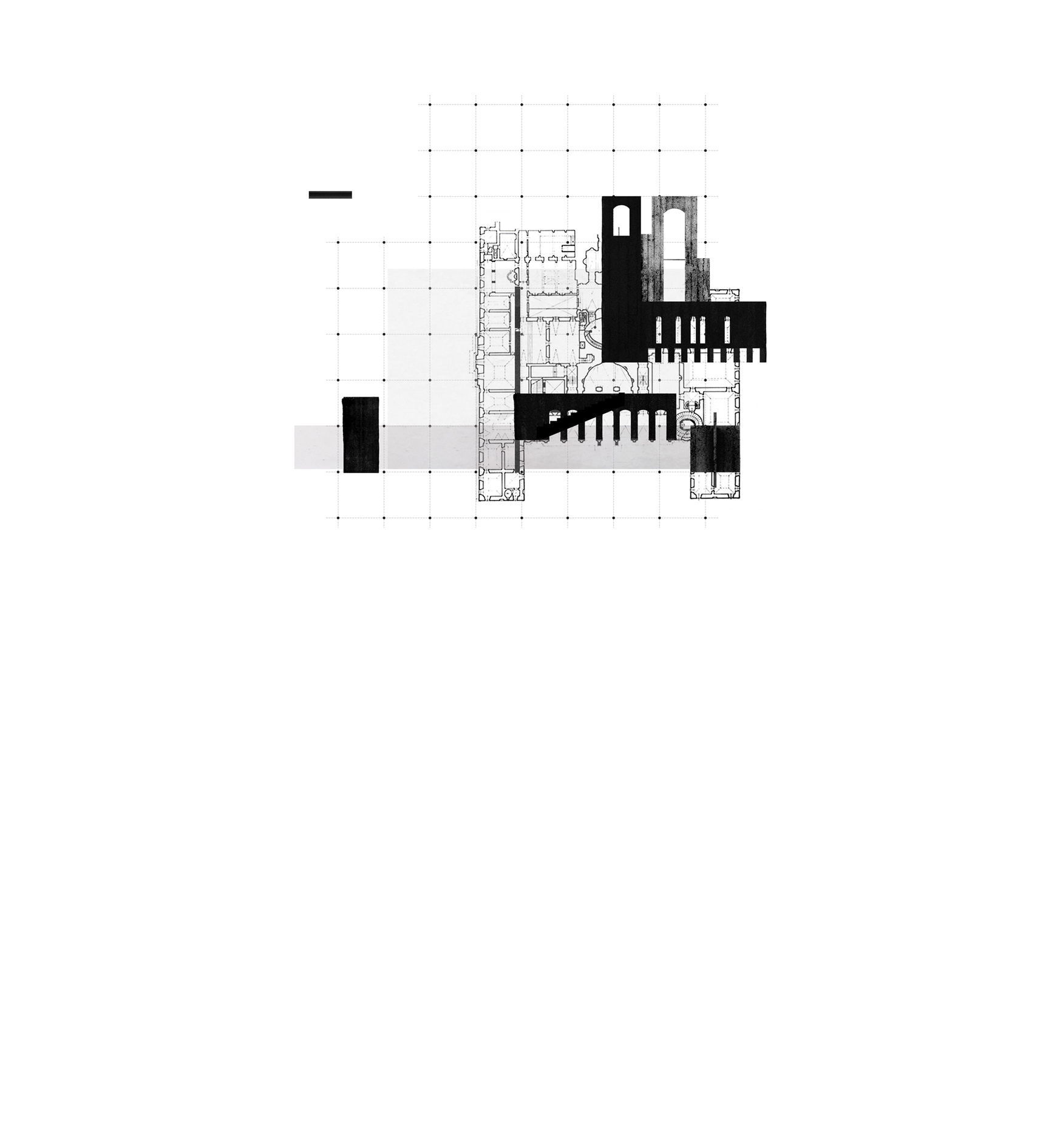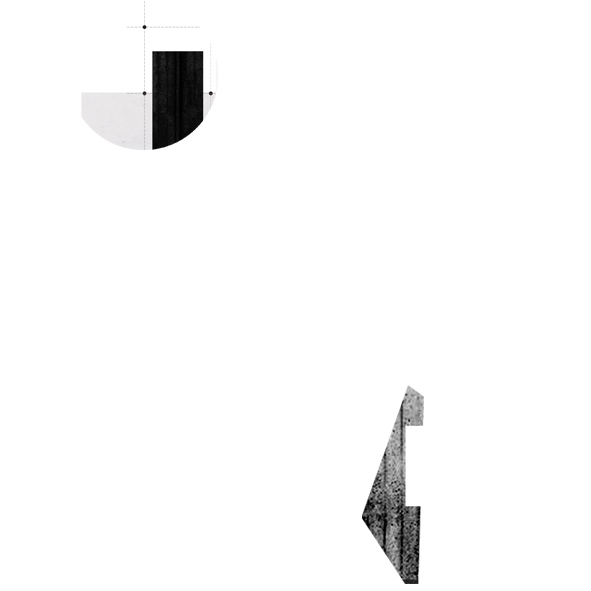
Architecture of artefacts in space
text and graphics: Ela Zdebel,
graduate of the Faculty of Architecture, Cracow University of Technology
consultation:
dr inż. arch. Beata Malinowska-Petelenz
oryginal version of the text : PL
translation to english: kreatura team
reading time: around 15 min
"- (...) you must be ... either the one or the other.
- Not at all, not at all, sir! No, for myself I am ... whoever you choose to have me.
- Well, and there, my friends, you have the truth!"
1
On the last pages of Pirandello's play, you can experience an extraordinary articulation of the truth. Right You Are! (If You Think So) is a key to many half-truths, depending on which seems more convincing at the moment. The heroes of the drama are intrigued by the vague relations in a family who came to the town, and from their doubts, they make a nosy neighbor's farce. The dispute over the truth is here black and white. Sensational arguments every now and then build or destroy a coherent picture of reality, and the truth is being seen from only one position. The title Right You Are! (If You Think So) is a paraphrase of the final sentence, which – for the annoyance of the heroes - each and every one of them admits right at the same time. Pirandello thus justifies the impact of many factors on the perception of the truth as something that we absorb, but which is naturally influenced because it is conditioned by personal experience and interpretation of images. This dualism is the quintessence of the Theater of the Absurd. But if the truth constructed on facts can be a relative term, then how should we refer to the assessment of much more complex phenomena, where instead of facts, there are barely subjective feelings?
// It is not without reason that the theater tries to marry with architecture. The truth is a peculiar fortress.
When assessing it, we often use criteria that in fact have developed in quite distant times, yet we are still attached to them. The truth in architecture is an exceptionally burning subject, although it might be easier to say that the falseness in architecture is an extremely urgent topic. And nowadays the falseness can be referred to anything that, for example, does not represent Vitruvius’ Firmatis, Utilitas and Venustatis. 2 It’s also considered pejoratively, as the word itself belongs to the group of negatively marked words. When there’s a confrontation of the universal image of architecture with the phenomenon of mystification through architecture, the narrative very often takes a tone of prejudice. The falseness in architecture can be both negative and fascinating at the same time, though.
There are a whole lot of architectural boxes or, as Karolina Szynalska calls them in her article – toy-like buildings 3 – scaled toys; deaf, disrespectful and unreflective. Something almost like a cloth for a bull for those who would fight these boxes with sabers in the name of their own pragmatic morality. Ethical execution of such architectural whims has already taken place, although the aesthetic side of the phenomenon is, in fact, a rich cross-section from all shades of kitsch to the sophisticated means of expression of recognized architects.
// A good public debate should, therefore, ask about the reasons behind these so-called follies 4 (objects that are aesthetically pleasing, often without any function). Meanwhile, it seems to anticipate why they are bad.
The opinion tolerates some of their attractive and scientifically useful structures like pavilions because these serve architects as a medium for experimentation. But after all, follies are a much wider palette of aesthetically pleasing forms which sometimes pretend to be objects which they are not. Therefore, it seems more interesting to give them a go and meander between the notions of whether this specific architecture is only the result of the exuberant ego of the artist, who for a moment became his own client, or maybe architecture assumed the demanding role of being actual instagramming architecture - a candy for the growing architectural audience in the Internet. And if so, this naturally raises the question of where lays the border between architectural tourism to really experience architecture and its superficial registration through the lenses (Instagramming perception). Big names in architecture, however, are not helping with this. The society greedily absorbs every fruit of the great architectural scene - be it buildings or non-functional boxes. Both attract the public, and architects seem to understand this growing demand for this new form of visual tourism.
1. www.youtube.com/watch?v=oibOPhxh6fw, Luigi Pirandello, Tak jest jak się państwu zdaje, 1917.
2. Witruwiusz, De architectura libri decem
3. Karolina Szynalska, Folly Architecture: Georgia Building Designs, E-architect, 2012, https://www.e-architect.co.uk/articles/folly-architecture.
4. https://www.britannica.com/art/folly
However, in order to consider the architecture of falseness truly exciting, one must grow to the level of abstraction and reject the rigid division of decoration - decorating (active) and architecture - (being) decorated (passive). There is a kind of paradox - in a sense, it was somehow assumed that some areas of life should be assigned an utilitarian role, while others would be excluded from this task. And while we all understand the function of stage decorations as those that represent a certain reality on the stage (and therefore they are useful), we do not question, for example, the usefulness of the decorations that we keep at home. It is because the society gave permission to make the decoration itself beautiful, but often useless, as its main goal is to please. For some reason, architecture has been denied the right to be a decoration (and therefore a symbolically constructed reality), or at least naming it this way is always giving thrills. That is why the significance of Potemkin village became unambiguously negative in the history of architecture before it was even possible to take a closer look at the wider context of this phenomenon.
This term originated from the historical event of the journey to Crimea by Catherine II in 1787. On her way, Minister Grigory Potemkin ordered to build temporary constructions, creating for a moment an illusion of well-being 5, so that soon after the departure they would dismantle them and set them again in a different place. Although the event is semi-legendary, its latent potential made the Potemkin villages (so-called from the initiator's name) a proven tactic to impress an opponent. Potemkin villages both refer to structures built from the scratch, as well as to mask the ugliness of already existing facades, obscuring them with new artificial fronts. Photographer Gregor Sailer took up the subject of documenting the surviving villages of Potemkin 6 . They arouse some disturbing fascination when looking at them. It’s difficult to determine whether this impression is caused by naively flat, vernacular postmodern facades or rather bold concrete forms crossing the harsh desert landscapes. In the name of Pirandello's logic, a picture that some read as untrue, for others will turn out to be true within their own intriguing assumption. "I am ... whoever you choose to have me" sounds remarkably well in this context. The Swedish Carson City, for example, brings to mind the colorful cardboard theater. However, it’s used to test automotive safety systems. 7 Simplified front facades of the buildings do not even try to deceive the viewer that there is anything more behind them. The American Junction City 8 in Fort Irwin, on the other hand, deliriously resembles the Iraqi military zone, although from the distance it seems to oscillate towards the abstract concrete blocks scattered on the sand, glowing proudly in the harsh sun. And only our own filter of interpretation will direct our reception more towards the falsehood or the interesting formation of the artifacts in the desert. Complexe de Tir en Zone Urbaine in France and Schnöggersburg in Germany are also kept in a similar raw concrete aesthetics, the latter even has a dummy of an underground. The architecture of these complexes directly suggests, as if realism was dropped in the name of schematic solidity. The Eastern bloc countries, in turn, were leading in decorated huts, whose grotesqueness and surrealism are still found by amateurs. Sometimes Potemkin's facades were to reflect something more than just an architectural detail - the Western European spirit of progress, in which the oppressive reality was wrapped. In the People's Republic of China, Albert Speer Jr. was involved in the construction of the stylized German city of Anting 9to enchant the Chinese with the European freshness. This propaganda approach to introduce the new order was in some way related to the utopian ideas of development that in the 20th century took possession of the West. Potemkin's architecture was no longer just a farce - it was a tragedy hidden under the mask of progress.
5. Showcasing the Great Experiment: Cultural Diplomacy and Western Visitors to the Soviet Union, 1921-1941, Michael David-Fox, Oxford University Press, USA, 2012, s. 7-8.
6. Gregor Sailer Photography, www.gregorsailer.com
7. Around Carson, http://aroundcarson.com/2012/05/14/
8. Alan Taylor, A Replica of Afghanistan in the Mojave, The Atlantic, 2013, https://www.theatlantic.com/photo/2013/09/a-replica-of-afghanistan-in-the-mojave/100593.
// However, there is something that the villages of Potemkin undoubtedly succeeded in. They have survived to this day as the artifacts abandoned in space. This is something that many utopias, whose expansive projects have never been allowed to materialize, have failed with.
The openwork composition of the concrete curtains of Complexe de Tir en Zone Urbaine has something almost sculptural and theatrical. Potemkin's villages are scenography for an uninhabited life, and despite their obvious infantileness, for some reason, give the thrill of fascination.
In the 20th century, the theater also experienced a revolution. Undoubtedly, the symbolist Edward Gordon Craig and his experimental approach to the stage design played an invaluable role in breaking up with prevailing realism.10 Craig introduced a stage constructed from the screens, which in a metaphorical way replaced the more literal definition of space. By the way, he said the significant words: "Remember that on a sheet of paper no larger than two inches, you can draw a line that seems to rise miles in the air, you can do the same on the stage because everything is a matter of proportion." 11 The set design has never before reached the architectural dimension as it was in Craig's time. Its appearance required a shock and break with the boundaries of realism. The aforementioned proportion is the key, according to which one can look at architecture through the prism of large-scale clean forms filling spaces to give them a symbolic overtone.
Theater gives grounds for fantasizing about the architecture of totems in the landscape. Wai Architecture Think Tank issued their own manifesto around architecture, formulating, among other things, the theory of Hardcorism or Totems without quality..12
9. Dieter Hassenpflug, European Urban Fictions in China, Espaces Temps.net, 2008, www.espacestemps.net/articles/european-urban-fictions-china.
10. Współczesny dramat w teorii i scenicznej praktyce, J. L. Styan, Zakład Narodowy imienia Ossolińskich, 1995, s. 165.
11. Współczesny dramat w teorii i scenicznej praktyce, J. L. Styan, Zakład Narodowy imienia Ossolińskich, 1995, s. 167
12. www.waithinktank.com/Suprematist-Landscapes
13. www.waithinktank.com/Pure
"Hardcorism is pure form unconcealed. It is blunt, straightforward, explicit, up front. It presents itself as it is, and represents what it presents. No decoration. No crime. No ornament. No structure. No distractions. No program. No excuses. No dialectics. No post-occupancy. No hat-tricks. No diagrams. Archetypes of Jungesque proportions, Hardcorism is pure imagery embedded in the Collective Unconscious. Hardcorism is architecture made for photography, for engraving, for model making. Hardcorism is emphatic; final. Hardcorism is reductionist. It is architecture as architecture.” 13 Totems, not objectified in their essence, are architecture without a program; they do not refer to existing objects, they have no purpose. They exist in a world freed from themselves.
The above considerations, however, have no ambition to be a pean in honor of the disfigured function of architecture. Meandering between the decorating architecture (follies) and the pretending architecture (Potemkin villages), and finally, also the manifesting architecture, was to somehow provoke the question whether it is justified to delimit the substantive architecture of the border. The border against the nature of a man to fantasize about a radical dialogue between nature and architecture, proposed by Superstudio or Archizoom, amongst many.
// The question asked is not to answer it, but to question the veracity or inaccuracy of the previous judgments around what architecture and the scale that describes it can be.
We perceive architecture on a human scale because that’s only how we’re able to empirically examine it. Everything that goes beyond our perceptual abilities is classified as non-architecture, false. However, we usually are not able to substantively answer the question why architecture cannot really be anything other than what it was before. For example, beautiful scenery in space.




